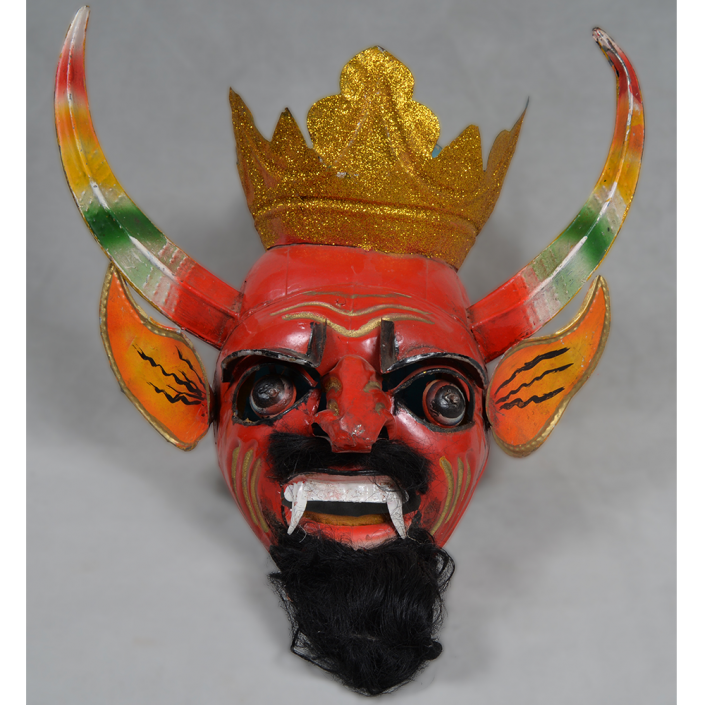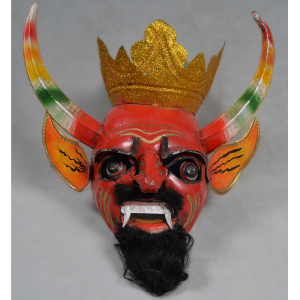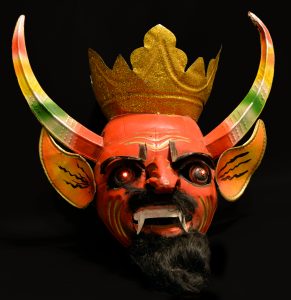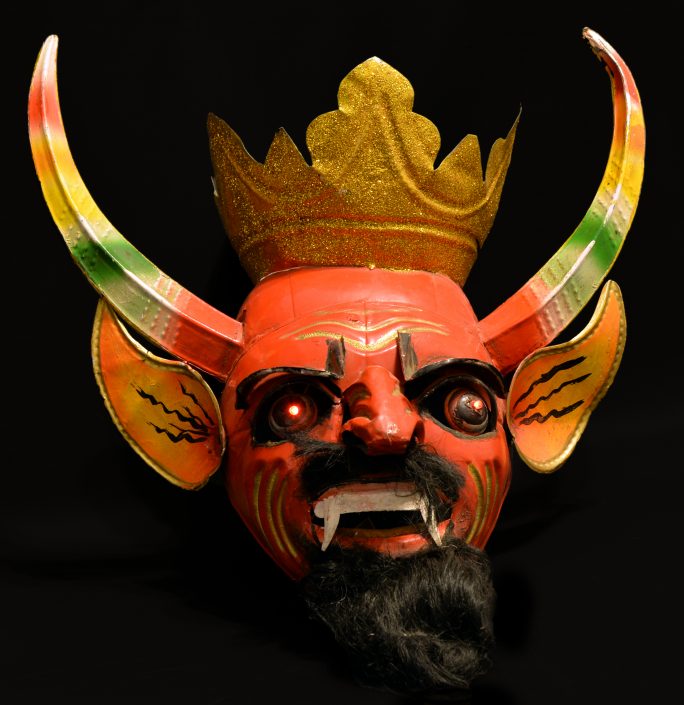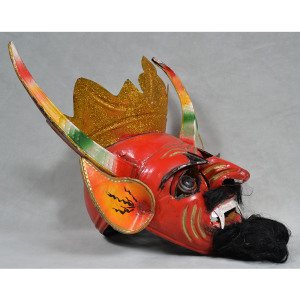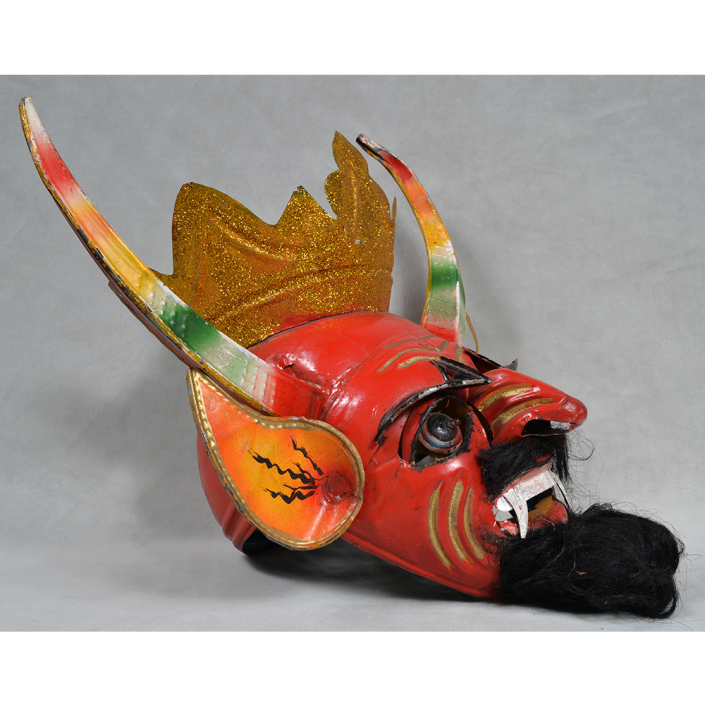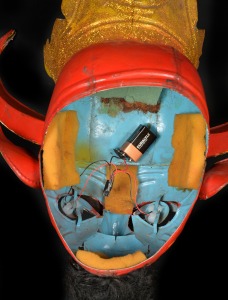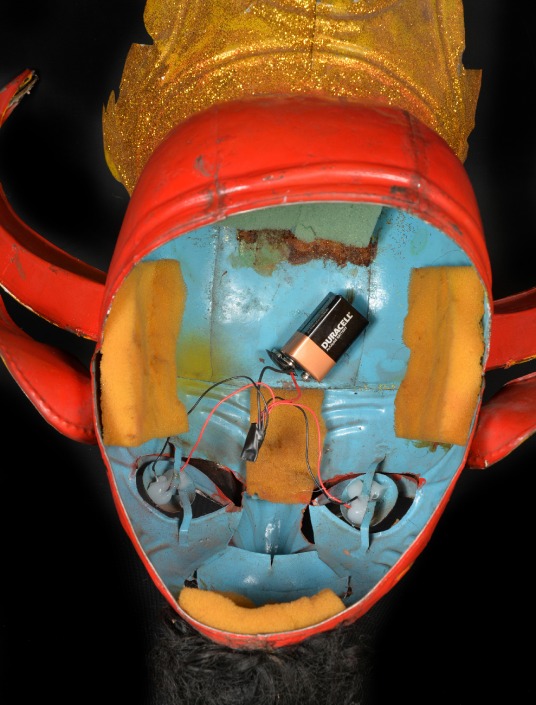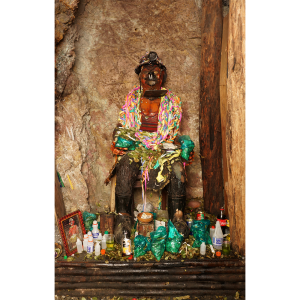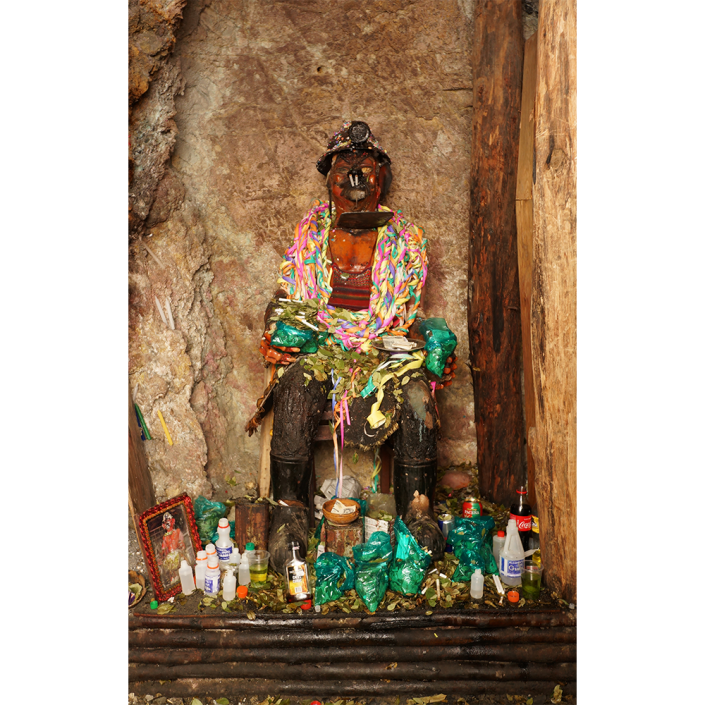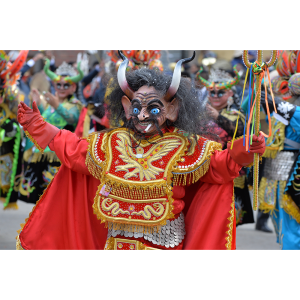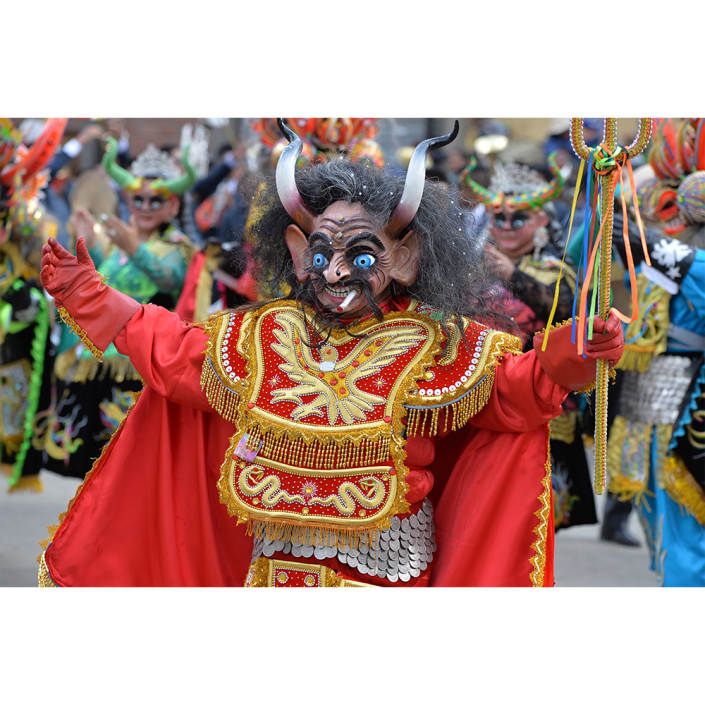TITLE: Tío Supay
TYPE: helmet mask
GENERAL REGION: Latin America
COUNTRY: Bolivia
SUBREGION: Oruro
ETHNICITY: Quechua and Aymara
DESCRIPTION: Tío Supay (Uncle Supay) Mask
CATALOG ID: LABO013
MAKER: Unknown
CEREMONY: Carnival
AGE: 1970s
MAIN MATERIAL: tin sheet
OTHER MATERIALS: glitter; dyed plant fiber; oil paint; foam rubber; LED lights and wiring
The Tío Supay (Uncle Supay) is the Incan god of death, whose worship predates the Spanish conquest. Incans and their descendants, the Quechua and Aymara peoples, prayed and made offerings to Supay to propitiate him. In most mines in the Bolivian and Peruvian Altoplano, a figure of Tío Supay would be seated deep in the shaft, and cigars, cigarettes, alcohol, food, and other offerings are left for him to protect the miners.
The Catholic colonizers objected to Supay, viewing the offerings as Devil worship, and so Supay came to be identified with the Christian Satan. His appearance morphed to resemble the Catholic Devil myth, and he plays the role of a demon opposed to the Archangel Michael in the Carnival parades of Oruro. Nonetheless, the worship of Supay continues, and most Aymara people deny any connection between Supay and the Catholic Devil.
This specific mask was made in the 1970s by a caretero (mask maker) in the Calle de los Andes, La Paz for use in the Oruro Carnival. Later, LED lights were added to the eyes with silicon glue in the 2000s to make the mask light up at night.
For more on Bolivian masquerade, see Peter McFarren ed., Masks of the Bolivian Andes (La Paz: Editorial Quipus/Banco Mercantil SA, 1993).
